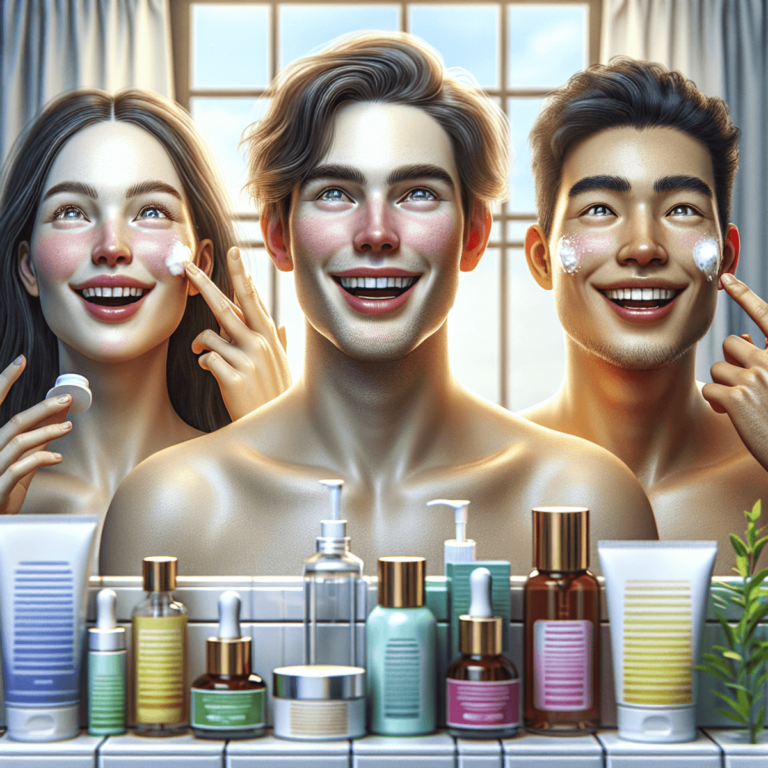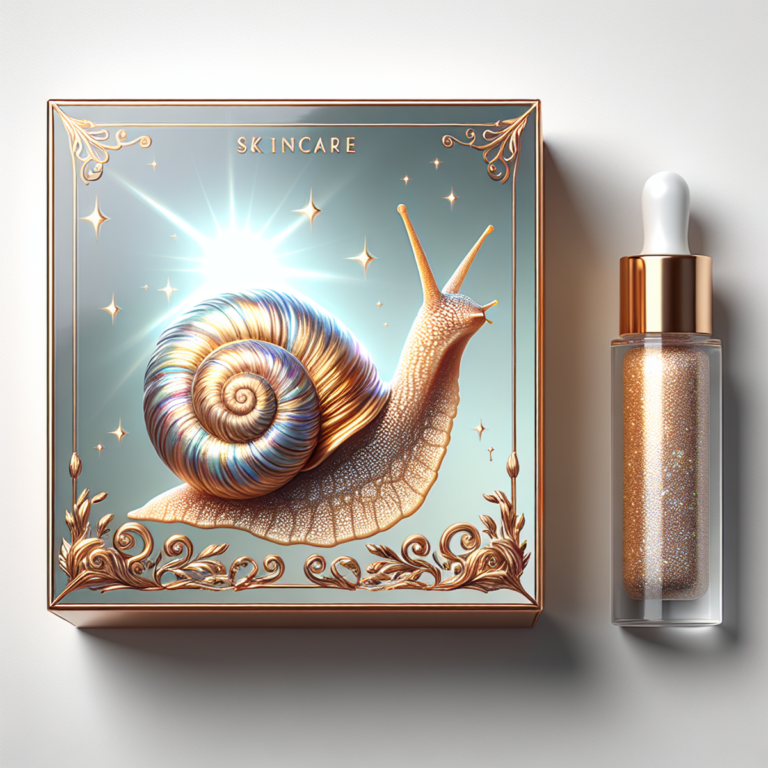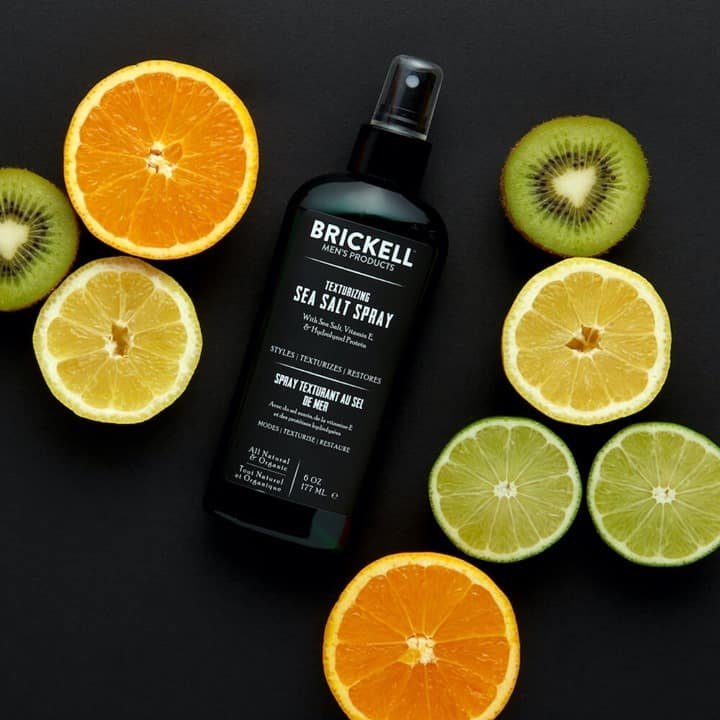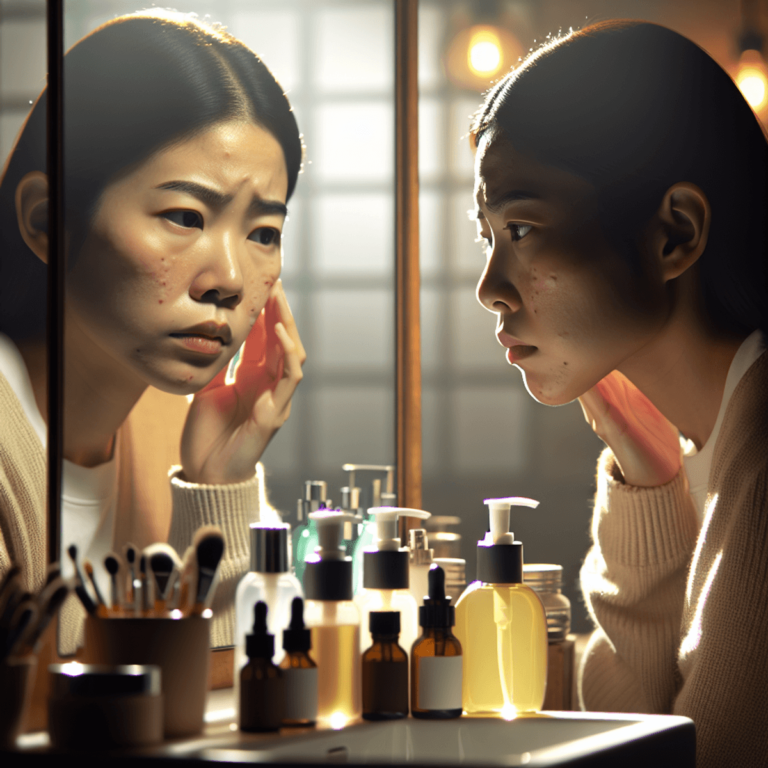How to remove pimples naturally and permanently

Introduction
Dealing with pimples can feel like an endless battle. You’ve likely tried countless products promising quick fixes, yet those stubborn spots keep coming back. The good news? Nature offers powerful solutions for clear, healthy skin.
This comprehensive guide reveals proven natural methods to eliminate pimples and prevent future breakouts. You’ll discover:
- Simple home remedies using ingredients from your kitchen
- Effective skincare routines that work with your skin, not against it
- Science-backed dietary changes for clearer skin
- Practical lifestyle adjustments to prevent breakouts
- Natural solutions for different types of acne, from cystic pimples to forehead bumps
- Methods to fade dark spots and pimple scars naturally
The beauty of natural remedies lies in their gentle yet effective approach. Unlike harsh chemicals that can strip your skin, natural solutions work to restore balance and promote long-term skin health. These methods target not just the visible symptoms but the root causes of acne.
Ready to transform your skin? Let’s explore these natural solutions that have helped countless people achieve clear, radiant skin without harmful side effects or expensive treatments.
Understanding Pimples and Their Causes
Pimples develop in various forms, each requiring specific treatment approaches. Let’s explore the main types you might encounter:
Types of Pimples:
- Whiteheads: Closed, white-tipped bumps caused by trapped oil and dead skin cells
- Blackheads: Open pores filled with oxidized oil, appearing dark at the surface
- Papules: Small, red, tender bumps indicating inflammation
- Pustules: Red bumps with white or yellowish pus at their tips
- Cystic Acne: Deep, painful bumps filled with pus and fluid
- Blind Pimples: Hard lumps under the skin without a visible head
Common Triggers:
- Hormonal changes during puberty, menstruation, or pregnancy
- Excessive sebum production
- Bacterial growth (P. acnes)
- Diet high in refined sugars and dairy
- Chronic stress leading to increased cortisol levels
- Genetics and family history
- Environmental factors like humidity and pollution
The Skin Health Connection
Your skin‘s natural barrier plays a crucial role in pimple formation. When this barrier becomes compromised, several reactions occur:
- Increased oil production clogs pores
- Bacteria multiply rapidly in blocked follicles
- Inflammation triggers redness and swelling
- Dead skin cells accumulate faster than normal
Risk Factors:
- Using comedogenic products that block pores
- Touching your face frequently
- Irregular cleansing routines
- Dehydration
- Poor sleep patterns
- High-stress lifestyle
- Certain medications
Understanding these fundamental aspects helps you identify the most effective treatment methods for your specific type of acne. Different pimple types respond better to certain remedies, making proper identification essential for successful treatment.
1. Ice Cubes: A Simple Yet Effective Remedy
Ice therapy is one of the fastest and easiest ways to treat inflamed pimples. This natural remedy works by constricting blood vessels beneath your skin, reducing redness and swelling within minutes of application.
Key Benefits of Ice Treatment:
- Shrinks enlarged pores
- Decreases inflammation
- Numbs painful spots
- Reduces excess oil production
- Improves blood circulation
Step-by-Step Ice Application Guide:
- Wrap Preparation
- Take a clean ice cube
- Wrap it in a thin cotton cloth or paper towel
- Never apply ice directly to your skin
- Application Method
- Hold the wrapped ice on the affected area for 30 seconds
- Remove for 15 seconds
- Repeat this process 3 times per pimple
- Limit treatment to 2-3 times daily
- Best Practices
- Use fresh ice cubes each time
- Clean your face before treatment
- Apply gentle pressure during ice contact
- Keep the ice moving slightly to prevent skin damage
Pro Tips:
- Create green tea ice cubes for enhanced anti-inflammatory benefits
- Apply ice therapy immediately after spotting a new pimple
- Use this method before applying makeup to reduce visibility
- Combine with spot treatments for maximum effectiveness
This cold therapy proves particularly effective for cystic acne and deep, painful pimples. The ice treatment reduces their size and appearance, making it an excellent option for quick relief from sudden breakouts.
2. Maintaining a Consistent Cleansing Routine
A proper cleansing routine stands as your first defense against stubborn pimples and recurring breakouts. Your skin collects dirt, excess oil, dead skin cells, and bacteria throughout the day – these elements can clog your pores and trigger breakouts when left unaddressed.
Essential Cleansing Steps:
- Wash your face twice daily – morning and night
- Use lukewarm water to open up pores
- Spend 60 seconds massaging the cleanser in circular motions
- Pat dry with a clean towel – never rub
Choosing the Right Cleanser:
- For oily skin: Look for gel-based or foaming cleansers with salicylic acid
- For sensitive skin: Choose fragrance-free, hypoallergenic formulas
- For combination skin: Opt for mild, pH-balanced cleansers
- For dry skin: Select cream-based cleansers with hydrating ingredients
Ingredients to Look For:
- Salicylic acid (helps unclog pores)
- Glycerin (maintains skin moisture)
- Ceramides (strengthens skin barrier)
- Tea tree oil (natural antibacterial properties)
Common Cleansing Mistakes to Avoid:
- Using hot water (irritates skin)
- Over-washing (strips natural oils)
- Harsh scrubbing (causes inflammation)
- Reusing dirty face towels (spreads bacteria)
A gentle cleanser removes impurities without disrupting your skin’s natural barrier. Your chosen cleanser should leave your skin feeling clean but not tight or dry. Skip harsh soaps and alcohol-based products that can strip your skin’s natural oils and trigger increased oil production.
3. The Power of Non-comedogenic Products
Non-comedogenic products are specifically formulated to prevent clogged pores – the primary culprit behind acne breakouts. These products don’t contain ingredients that block your pores, making them essential for maintaining clear, healthy skin.
Key Benefits of Non-comedogenic Products:
- Prevents pore blockages that lead to blackheads and whiteheads
- Reduces the risk of sudden breakouts
- Allows skin to breathe naturally
- Suitable for all skin types, especially acne-prone skin
Recommended Non-comedogenic Products for Your Skincare Routine:
Face Products:
- Water-based moisturizers
- Gel-based sunscreens
- Oil-free primers
- Mineral-based foundations
- Powder-based blushes and bronzers
Body Products:
- Lightweight body lotions
- Non-greasy sunscreens
- Oil-free body washes
When shopping for skincare products, check labels for these non-comedogenic ingredients:
- Hyaluronic acid
- Niacinamide
- Salicylic acid
- Glycerin
- Zinc oxide
Ingredients to Avoid:
- Coconut oil
- Cocoa butter
- Lanolin
- Mineral oil
- Petroleum
You’ll notice significant improvements in your skin’s texture and clarity by switching to non-comedogenic products. These products work particularly well for treating stubborn areas like facial breakouts, arm bumps, and body blemishes. The key lies in consistent use – replace your current products with non-comedogenic alternatives one at a time to identify which products work best for your skin type.
4. Harnessing the Benefits of Green Tea and Honey
Green tea is a powerful ingredient in natural skincare, packed with polyphenols and catechins that fight acne-causing bacteria. These antioxidants reduce inflammation and control oil production, helping you achieve clearer skin.
DIY Green Tea Toner Recipe:
- Steep 2 green tea bags in 1 cup of hot water
- Let it cool completely
- Transfer to a spray bottle
- Store in the refrigerator for up to 1 week
- Apply twice daily after cleansing
Raw honey enhances the benefits of green tea with its natural antibacterial properties. Together, they create an effective solution for treating small facial bumps and preventing new breakouts.
Green Tea-Honey Face Mask:
- Mix 1 tablespoon of cooled green tea
- Add 1 teaspoon of raw honey
- Apply to clean skin
- Leave for 15-20 minutes
- Rinse with lukewarm water
You can also drink 2-3 cups of green tea daily to enhance its skin-clearing effects from within. The antioxidants work internally to reduce inflammation and balance hormones that trigger breakouts.
Quick Application Tips:
- Use refrigerated green tea bags as a spot treatment
- Apply honey directly to individual pimples as an overnight treatment
- Create an ice cube tray with frozen green tea for morning facial treatments
Remember to patch test any new treatment on a small area of skin before full application. Both ingredients are gentle enough for daily use, making them ideal for long-term acne management.
5. Exploring the Healing Properties of Tea Tree Oil and Aloe Vera
Tea tree oil stands out as a powerful natural remedy for pimple treatment, thanks to its potent antibacterial properties. This essential oil contains terpenes that effectively combat P. acnes, the bacteria responsible for breakouts.
Using Tea Tree Oil Safely:
- Dilute 1-2 drops with 12 drops of carrier oil (jojoba or coconut oil)
- Apply the mixture directly to pimples using a cotton swab
- Use once or twice daily after cleansing
- Never apply pure tea tree oil directly to your skin
- Perform a patch test before regular use
Aloe vera brings its own set of healing benefits to your skincare routine. This succulent plant contains compounds that reduce inflammation and speed up skin healing.
Aloe Vera Application Methods:
- Extract fresh gel from an aloe leaf
- Apply a thin layer directly to affected areas
- Leave on for 15-20 minutes
- Rinse with cool water
- Use twice daily for best results
Creating a Tea Tree and Aloe Vera Blend:
- Mix 1 tablespoon pure aloe vera gel
- Add 2-3 drops of diluted tea tree oil
- Stir well and apply to problem areas
- Store remaining mixture in an airtight container
- Use within 5-7 days
This powerful combination works particularly well for treating blind pimples and stubborn acne. The antimicrobial properties of tea tree oil penetrate deep into the skin while aloe vera calms irritation and reduces redness.
Remember to choose high-quality, pure versions of both ingredients to maximize their effectiveness and minimize the risk of skin irritation.
6. Apple Cider Vinegar: A Versatile Solution for Acne-Prone Skin
Apple cider vinegar (ACV) stands out as a powerful natural remedy for acne-prone skin. Its unique composition helps maintain your skin’s pH balance at the optimal level of 5.5, creating an environment where acne-causing bacteria struggle to thrive.
Key Benefits of ACV for Skin:
- Balances skin pH levels
- Reduces inflammation
- Fights harmful bacteria
- Removes dead skin cells
- Minimizes dark spots
- Shrinks existing pimples
Creating Your ACV Solution:
- Mix 1 part ACV with 3 parts water
- Test on a small patch of skin first
- Apply with a cotton ball to affected areas
- Leave for 5-10 minutes
- Rinse thoroughly with cool water
You can use this solution twice daily – morning and night. For sensitive skin, increase the dilution ratio to 1:4 or 1:5.
Spot Treatment Recipe:
- 1 tablespoon diluted ACV
- 1 teaspoon honey
- 2 drops tea tree oil
Mix these ingredients to create a potent spot treatment for stubborn pimples, including those in sensitive areas. Apply directly to blemishes using a q-tip.
Warning Signs to Watch:
- Burning sensation
- Increased redness
- Skin irritation
- Persistent dryness
If you experience any of these symptoms, discontinue use immediately and increase the dilution ratio. People with sensitive skin should start with a more diluted solution (1:5 ratio) and gradually adjust based on their skin’s response.
Dietary Changes That Support Clear Skin
Your diet plays a crucial role in maintaining clear, healthy skin. Research shows a direct connection between what you eat and the appearance of pimples, particularly on areas like the chin, forehead, and cheeks.
Foods That Fight Acne:
- Omega-3 rich fish (salmon, mackerel)
- Leafy greens packed with vitamins A and E
- Zinc-rich foods like pumpkin seeds and nuts
- Berries high in antioxidants
- Probiotic-rich foods (kimchi, yogurt)
Foods That Trigger Breakouts:
- High-glycemic carbohydrates
- Processed snacks and sugary treats
- Dairy products, especially skim milk
- Deep-fried foods
- Excessive chocolate consumption
A balanced anti-inflammatory diet helps reduce those stubborn tiny bumps on your forehead and chin pimples. The key lies in maintaining stable blood sugar levels through regular meals rich in whole foods.
Quick Diet Tips for Clear Skin:
- Start your day with a green smoothie
- Swap dairy milk for plant-based alternatives
- Include a portion of fatty fish twice weekly
- Snack on raw nuts instead of processed foods
- Drink 8-10 glasses of water daily
These dietary adjustments work alongside your skincare routine to create lasting results. The combination of proper nutrition and targeted skincare helps eliminate spots naturally, supporting your journey toward clear, radiant skin.
Lifestyle Modifications for Acne-Free Skin
Your stress levels directly impact your skin’s health through hormone fluctuations. When you’re stressed, your body produces excess cortisol, triggering increased oil production and inflammation – perfect conditions for pimple formation.
Here’s how you can manage stress effectively for clearer skin:
Mindful Breathing Exercises
- Practice deep breathing for 5-10 minutes daily
- Try the 4-7-8 technique: inhale for 4 counts, hold for 7, exhale for 8
- Set reminders on your phone for regular breathing breaks
Physical Activities
- Regular exercise releases endorphins, reducing stress
- Yoga poses like child’s pose and downward dog increase blood flow to your face
- 30 minutes of daily movement can significantly impact your skin’s health
Relaxation Practices
- Start a 10-minute daily meditation routine
- Use guided relaxation apps before bedtime
- Create a calming bedtime ritual to reduce nighttime stress
Stress-Reducing Habits
- Limit screen time, especially before bed
- Keep a stress diary to identify triggers
- Practice time management to prevent overwhelming situations
Remember to track your stress levels alongside your skin’s condition. You’ll likely notice patterns between high-stress periods and breakouts, helping you take preventive action when needed.
The Importance of Hydration, Sleep, and Skincare Consistency in Preventing Breakouts
Your skin‘s health directly reflects your hydration levels and sleep quality. Drinking 8-10 glasses of water daily helps flush out toxins, maintains skin elasticity, and reduces the likelihood of clogged pores.
Hydration Tips for Clear Skin:
- Keep a water bottle at your desk
- Set hourly reminders to drink water
- Eat water-rich foods like cucumbers and watermelon
- Track your water intake using a mobile app
- Limit dehydrating beverages like coffee and alcohol
Quality sleep allows your skin cells to regenerate and repair damage. During deep sleep, your body produces collagen, a protein essential for skin healing and preventing premature aging. Research shows that poor sleep quality correlates with increased acne breakouts and slower healing of existing blemishes.
Sleep Optimization for Skin Health:
- Maintain a consistent sleep schedule
- Create a dark, cool sleeping environment
- Use clean pillowcases changed weekly
- Sleep on your back to prevent facial friction
- Aim for 7-9 hours of uninterrupted rest
A consistent skincare routine amplifies these benefits. Apply products in the correct order – cleanser, toner, treatment products, moisturizer, and sunscreen during the day. This sequence maximizes product absorption and effectiveness, creating a strong foundation for clear, healthy skin.
In addition to these factors, eating well also plays a crucial role in maintaining skin health. A balanced diet rich in vitamins and minerals can significantly improve your skin’s condition while complementing your hydration, sleep, and skincare regimen.
Quick Fixes for Sudden Breakouts & Long-Term Prevention Strategies
Unexpected pimples can appear at the worst times. Here’s your emergency toolkit for fast-acting solutions:
Immediate Relief Methods:
- Apply a cold green tea bag directly to the affected area for 3-5 minutes
- Create a spot treatment paste using aspirin and water
- Dab a tiny amount of raw honey on the pimple before bed
- Use hydrocolloid patches to prevent picking and speed up healing
DIY Spot Treatments:
- Mix equal parts calamine lotion and tea tree oil
- Create a paste with turmeric powder and milk
- Apply crushed neem leaves mixed with rose water
Long-Term Prevention Plan:
- Track your breakouts in a skin diary to identify triggers
- Take weekly progress photos to monitor skin changes
- Switch pillowcases every 2-3 days
- Clean your phone screen daily with alcohol wipes
Scar Prevention Tips:
- Never squeeze or pick at active breakouts
- Apply sunscreen daily to prevent dark spots
- Use vitamin C serum to fade existing marks
- Incorporate gentle chemical exfoliants like lactic acid
Remember to patch test any new treatment on your inner arm before applying it to your face. A consistent prevention routine proves more effective than treating individual breakouts. Consider your skin type when selecting treatments – what works for oily skin might irritate dry skin.
Conclusion
Taking a holistic approach to skincare transforms your journey to clear, healthy skin. Natural remedies paired with mindful lifestyle choices create a powerful foundation for lasting results. Your skin deserves this comprehensive care strategy.
The path to permanently removing pimples combines:
- Daily use of gentle, natural treatments
- Consistent skincare routines
- Smart dietary choices
- Stress management practices
- Quality sleep habits
- Proper hydration
These elements work together to address both the visible symptoms and underlying causes of acne. Whether you’re dealing with facial acne or searching for pimples on buttocks home remedies, the principles remain consistent.
Remember that your skin is unique. You might need to experiment with different combinations of natural pimple remedies to find what works best for you. Track your skin’s responses to various treatments and adjust accordingly.
Start small with one or two natural treatments, then gradually incorporate additional elements as you build your personalized skincare routine. Your commitment to this balanced approach will reward you with clearer, healthier skin that lasts.
Trust the process – your skin’s transformation through natural methods might take time, but the results are worth the patience and dedication.
FAQs (Frequently Asked Questions)
What are some natural remedies for removing pimples?
Natural remedies for removing pimples include using ice cubes to reduce swelling, maintaining a consistent cleansing routine with gentle, oil-free products, and incorporating ingredients like green tea, honey, tea tree oil, and aloe vera into your skincare regimen.
How can I get rid of pimples overnight?
To get rid of pimples overnight, you can apply ice to reduce redness and swelling, use spot treatments with tea tree oil or aloe vera, and ensure your skin is clean and free from any clogging products. Additionally, avoiding touching your face can help prevent further irritation.
What role does diet play in acne prevention?
Diet plays a significant role in acne prevention. An anti-inflammatory diet rich in fruits, vegetables, whole grains, and healthy fats can support clear skin. Conversely, foods high in sugar and refined carbohydrates may worsen acne symptoms.
Why is it important to use non-comedogenic products?
Using non-comedogenic products is essential for acne-prone skin as they do not clog pores. This helps prevent the formation of new pimples while allowing your skin to breathe and heal effectively.
How does stress affect my skin?
Stress can lead to hormonal changes that trigger increased oil production in the skin, which may result in breakouts. Managing stress through relaxation techniques like yoga or meditation can help improve overall skin health.
What are some quick fixes for sudden breakouts?
Quick fixes for sudden breakouts include applying ice to reduce inflammation, using over-the-counter spot treatments containing benzoyl peroxide or salicylic acid, and ensuring you keep your skin clean and moisturized without over-drying it.










